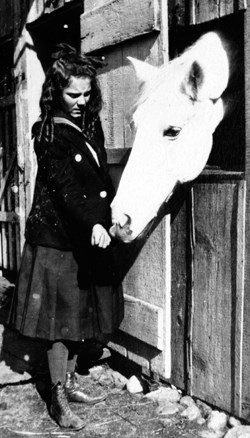|
Passionate about landscape architecture, Cora Weir Burlingham studied botany and horticulture at the Parson School of Design in New York. Very innovative for the day, Cora created a formal sunken garden alongside the Burlingham House, which would be later featured in the 1956 publication of Treasury of American Gardens. In addition to the garden, she also hired local stonemasons to construct stone walls around the property. Her brother-in-law Mahonri Young lovingly referred to it as the “Great Wall of Cora.” Cora loved the property and its landscape so much that she donated 37 acres of her property to the Connecticut chapter of the Nature Conservancy. Her strong interests in landscape design helped protect and preserve Weir’s beloved Branchville home. 
NPS Photo Landscape Designer (1892-1986)
NPS Photo Cora Weir Burlingham was the third daughter of Julian Alden Weir and Anna Baker Weir. Her interests in landscape design, horticulture, and preservation were strong forces in Weir Farm's history. Cora studied at the Parson School of Design in New York, and also was formally educated in botany and horticulture. She worked for many years as at the New York Botanical Gardens, and served on their board of directors. For a time, Cora also worked as a volunteer nurse in France for the American Red Cross during World War I, having attended the National Service School for Relief Aid in Washington D.C with her sister Dorothy. 
NPS Photo

Julian Alden Weir (1852-1919)
As the father of American Impressionism, Weir used new, international ideas about painting to change American art. 
Meet the Artists
Learn about the prominent artists and their family members who lived and worked here. 
Dorothy Weir Young (1890-1947)
Weir's second daughter Dorothy continued her father's artistic legacy and and worked to preserve his inspiring story and work. |
Last updated: June 12, 2021
